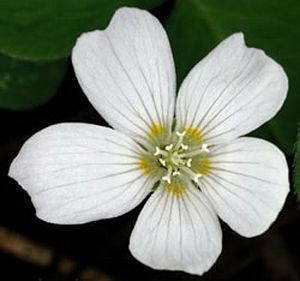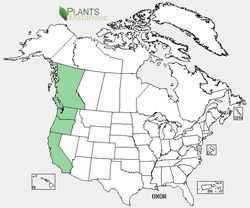Redwood Sorrel (Forests)
Contents
Redwood Sorrel
Redwood Sorrel (Oxalis oregana)
Redwood Sorrel is in the Oxalidaceae, the wood sorrel family, a relatively small family with three genera and 875 species of mostly tropical and subtropical regions. Redwood sorrel can be used as a groundcover in cultivated landscapes as long as the conditions are shady and cool. Plants used for landscaping can be purchased from native plant nurseries. Seeds can also be collected from native habitats but not before proper permission and permits have been obtained from the appropriate agency or land owner. The collection of entire plants from wild populations is strongly discouraged.
Redwood sorrel is a perennial herb arising 5-20 cm (2-7.9 inches) from a scaly rhizome. Leaves are all basal and typically number fewer than 10. Petioles are 3 -20 cm (1.2-7.9 inches) long and covered with brown hairs. Leaf blades are clover like in appearance and 1 to 4.5 cm (0.4-1.8 inches) long. Single flowers arise above the height of the leaves on stalks (referred to as peduncles) that are covered with brown hairs similar to the petioles. Petals are white to pink in color and 13-20 mm (0.5-0.8 inches) long. Sepals are 5-10 mm (0.2-0.4 inches) long.
This species grows in cool, moist Douglas-fir and coastal redwood forests in the Cascade, Olympic, and Coast Mountains from southwest British Columbia to the San Francisco Bay area of California. Being adapted to shady environments, redwood sorrel is capable of photosynthesis at low light levels. Higher intensity light can damage the sensitive leaves. As a protective measure, leaves fold downward within several minutes when struck by direct light, a process known as nyctinasty.
Leaves of redwood sorrel are edible cooked or raw but are mildly toxic from the presence of oxalic acid. When consumed, they should be eaten in small quantities. Northwest tribes were known to eat redwood sorrel with dried fish. Native Americans would prepare decoctions of the entire plant to wash body parts affected by rheumatism. A poultice prepared from the plant was applied to boils and sores and used to draw out infection.
For More Information
Editor's Note
- This article was written by Russ Holmes.

